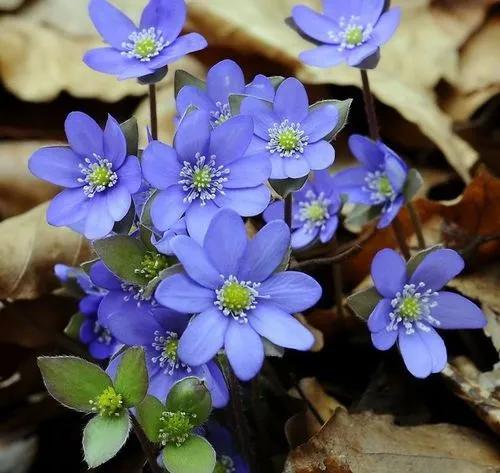With its enchanting orange blooms and trailing growing habit, Сampsis grandiflora is sure to become a colorful accent in the garden.
Chinese Trumpet Creeper Care
Campsis grandiflora



Commonly known as Chinese Trumpet Creeper, Сampsis grandiflora is a deciduous vine native to eastern and southeastern China. This flowering vine is popular for its fast-growing habit and distinctive orange trumpet-shaped blooms. The plant can grow 20-30 feet (6-9m) long and reach 6-9 in (2-3 m) wide. The blooms are arranged in clusters of large orange trumpet-shaped flowers with a yellow throat. The flowers emerge in summer and have 5 petals each. The foliage of the plant is deep green in color and has a glossy texture. Its elongated shape and serrated edges accompany the distinctive appearance of the flowers and make the plant a good option for growing as an accent plant in the garden.
How to Care for the Plant

Water

Give your flowering vine a drink once the top 2 in (5 cm) of soil feels dry to the touch. It’s important not to overwater the plant, as excessive moisture leads to fungal disease development.

Pruning

Prune Chinese Trumpet Creeper in early spring before new growth appears. Remove the leggy and diseased parts with clean pruning shears to shape the plant.

Fertilizer

It’s not necessary to fertilize Chinese Trumpet Creeper.

Sunlight

Put your Chinese Trumpet Creeper where it can enjoy the morning sun and afternoon shade. East or south-facing windows would be the most comfortable for this plant.

Soil

Plant your greenie in a slightly acidic to neutral soil with pH range between 6.8-7.2. It’s recommended to put 1 in (3 cm) of pebbles at the bottom of the pot to improve drainage.

Propagation

Stem cutting is the fastest and easiest way to propagate this vine. Take a healthy 4-6 inch (10-15 cm) long stem from the current year's growth in early spring and dip the cut end into a rooting hormone powder. Place it in a pot with well-draining soil and keep the cutting consistently moist to let it enroot. After the young greenie is fully established, replant it to a desired place.

Temperature

Chinese Trumpet Creeper feels best in a mild environment with a 50-82°F (10-28°C) temperature range. Keep it away from droughts and air vents, as the plant negatively reacts to severe temperature fluctuations.

Container

Growing Chinese Trumpet Creeper in a container, opt for a big enough pot to accommodate the plant’s root system and allow some room for growth. It should be at least 2 times larger than the plant’s root ball. It’s recommended to opt for a pot made of plastic or glazed ceramics as such materials will not allow moisture to evaporate too quickly. It’s important to choose a pot with drainage holes.

Fun fact

The Chinese Trumpet Creeper plant has a rich medicinal value. The decoction of the flowers is used to treat rheumatoid pains, traumatic injuries, and difficult urination in traditional Chinese medicine.

Popularity

204 people already have this plant 44 people have added this plant to their wishlists

Common pests

Powdery mildew is the main culprit of Chinese Trumpet Creeper. The pests feed on the plant’s sap, resulting in stunted growth. In case you spot any signs like white coating or webbing on the plant, treat it with an insecticide from the local garden store.

Frequent diseases

Leaf blight and leaf spot tend to affect this flowering vine the most often. It’s important to maintain an appropriate watering routine to keep the plant healthy. In case you notice any signs of fungal disease development, replant the greenie with fresh soil and treat the plant with a fungicide.

Botanist’s tips

Discover more plants with the list below
Popular articles






